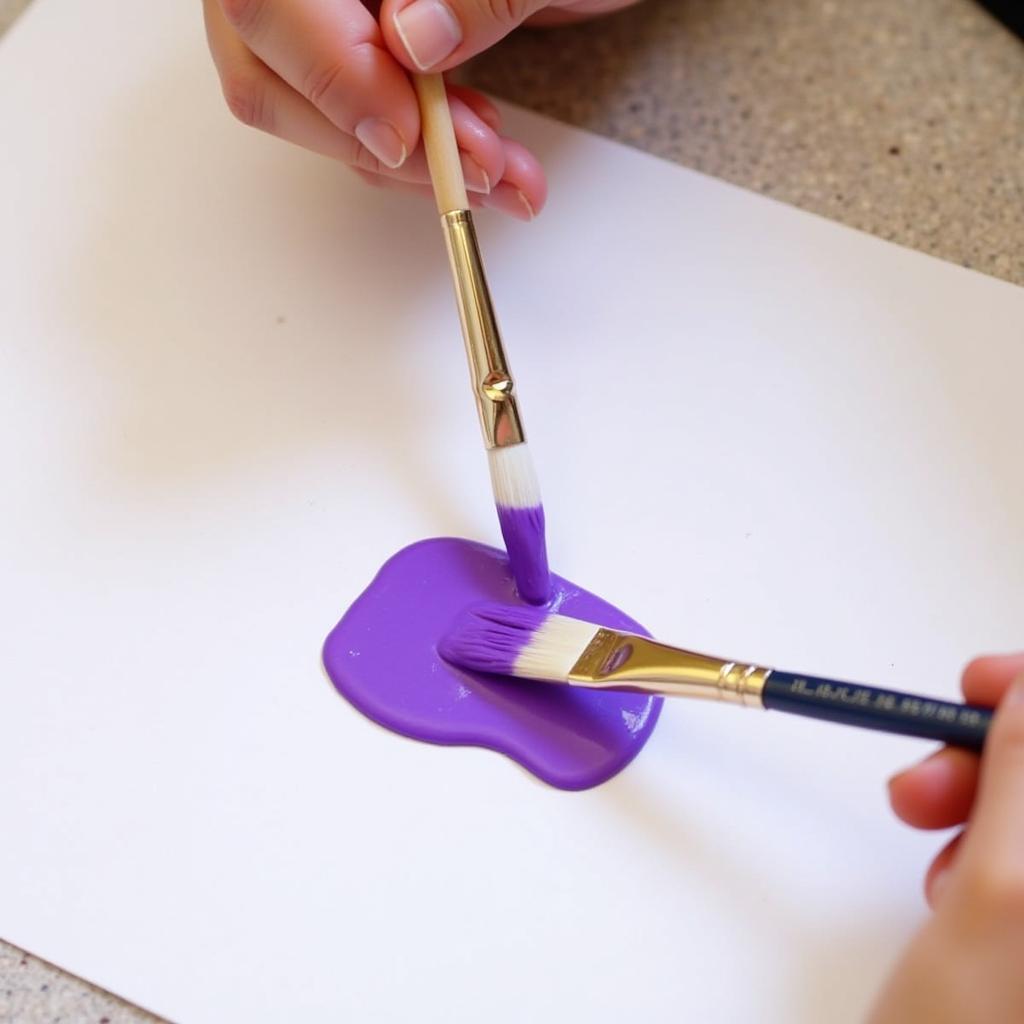Unlock the secrets of creating stunning shades of purple! Whether you’re an artist, a DIY enthusiast, or simply curious about color mixing, this guide will reveal the magic behind achieving the perfect purple hue. We’ll explore various color combinations, delve into color theory, and provide practical tips for mixing your own vibrant purples.
Decoding the Purple Palette: A Journey into Color Mixing
Purple, a color often associated with royalty, mystery, and creativity, isn’t a primary color. This means it can’t be created by mixing other colors. Instead, purple is a secondary color, born from the harmonious blend of two primary colors: red and blue. The exact shade of purple you achieve depends on the proportions of red and blue you use, as well as the specific shades of those colors.
But achieving the perfect purple goes beyond just mixing red and blue. Factors such as the type of paint (acrylic, oil, watercolor), the quality of pigments, and even the surface you’re painting on can all influence the final outcome. Let’s dive deeper into the intricacies of mixing purple.
Mastering the Mix: Red and Blue – The Foundation of Purple
The journey to creating purple begins with understanding the relationship between red and blue. A warmer red, like crimson, mixed with a cool blue, like ultramarine, will produce a different purple than a cooler red, like alizarin crimson, mixed with a warmer blue, like cerulean. Experimenting with various shades of red and blue is key to unlocking a diverse range of purples, from vibrant violets to deep indigos. For more insight into color combinations, see what colors go with midnight blue.
What shades of red and blue make the most vibrant purple?
Generally, mixing a cool blue like ultramarine or phthalo blue with a warm red like cadmium red or scarlet creates the most vibrant purple.
Can I use any type of red and blue to make purple?
While most reds and blues will create some form of purple, the specific shades can dramatically influence the final color. Experimenting with different combinations is highly recommended. If you’re curious about magenta, you might want to explore what colors go well with magenta.
Beyond the Basics: Expanding Your Purple Horizons
While red and blue are the core ingredients, adding other colors can subtly shift and enhance your purples. A touch of white will lighten the purple, creating lavender or lilac. Adding black will darken it, resulting in deep plum or eggplant hues. Introducing a small amount of yellow can create a warmer, more reddish-purple. Remember, small adjustments can make a big difference, so start with a tiny amount and gradually increase until you achieve the desired effect. Check out how to make hot pink from primary colors for a deeper understanding of primary color mixing.
“Understanding color theory allows you to confidently navigate the color wheel and create any shade you envision,” says renowned color specialist, Anya Sharma. “Don’t be afraid to experiment – the joy of color mixing lies in the discovery of unexpected hues.”
Practical Tips for Mixing Perfect Purples
- Start with a clean palette: This ensures the purity of your colors and prevents unwanted muddiness.
- Use a palette knife: This provides more control and a smoother blend compared to a brush.
- Mix small amounts at a time: This allows you to adjust the color gradually and avoid wasting paint.
- Test your color: Before applying it to your final project, test the color on a scrap piece of paper or canvas to ensure it’s the shade you want.
 Testing the Mixed Purple Paint on Paper
Testing the Mixed Purple Paint on Paper
“Mixing colors is like conducting an orchestra,” says celebrated artist, Leo Nguyen. “Each color is an instrument, and the proportions you use determine the final harmony.” Understanding how each color interacts is crucial for creating the desired effect. If you’re interested in exploring other color combinations, consider learning more about what colors do you mix to make the color purple.
Conclusion
Mixing the perfect purple is a rewarding journey of color exploration. By mastering the blend of red and blue, and experimenting with additional colors, you can unlock a spectrum of captivating purple hues. So, embrace the vibrant world of color and create the perfect purple to bring your creative visions to life! Maybe you are also interested in how to choose eyeshadow colors.
FAQ
- What are the primary colors? Red, blue, and yellow are the primary colors.
- Is purple a primary or secondary color? Purple is a secondary color.
- What happens if I mix red and blue in equal amounts? You will typically get a standard purple.
- How can I make a lighter purple? Add white to your purple mixture.
- How can I make a darker purple? Add black to your purple mixture.
- What other colors can I add to purple to change the hue? Adding yellow can create warmer tones, while a touch of green can create a more muted or greyed purple.
- What type of paint is best for mixing purple? Acrylic, oil, and watercolor paints can all be used to mix purple.
Need help choosing the perfect colors for your home or project? Contact us! Phone: 0373298888, Email: [email protected] Or visit us at: 86 Cầu Giấy, Hà Nội. We have a 24/7 customer service team ready to assist you.